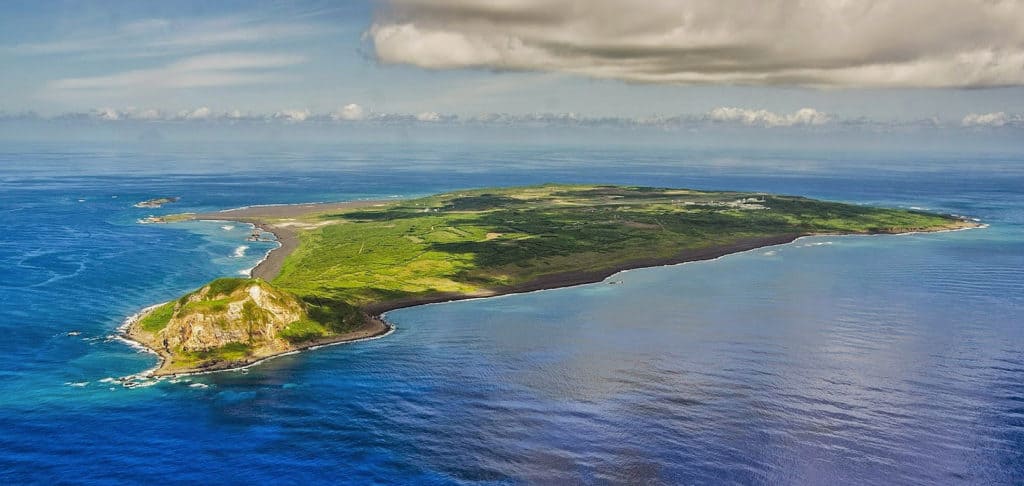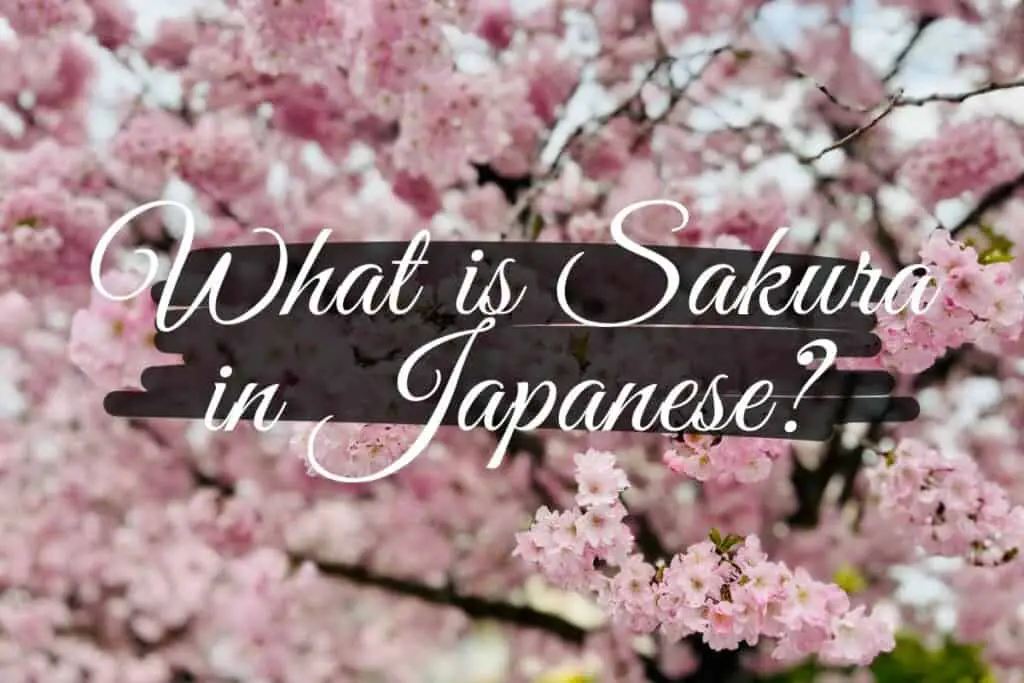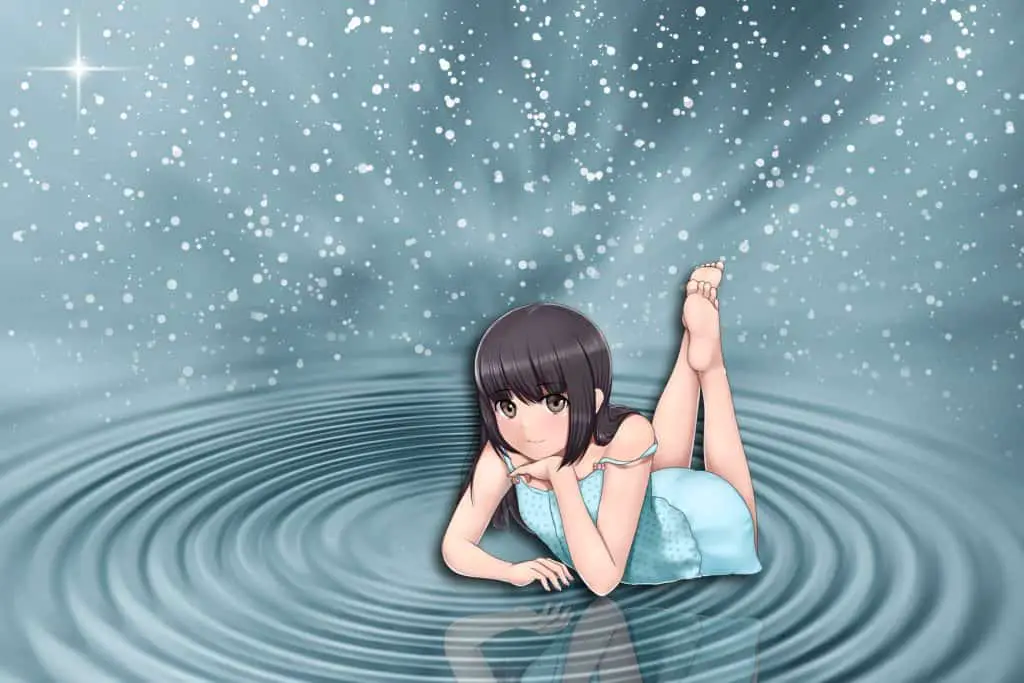The Japanese bullet train, also known as the Shinkansen (新幹線), is one of those incredible things about Japan, and that’s why I decided to gather all the information about it in this post. There are some cool facts about the bullet train that you’ll probably find useful whether you’re just curious or actually planning your trip to Japan.
The bullet train has existed since 1964, and it was built to link distant regions with Tokyo. The actual Shinkansen max speed can vary from 240 to 320 km/h (150 to 200 mph) and this train is extremely punctual. Tourists can buy individual tickets or a Japan Rail Pass to ride the bullet train.
Well, that’s the very short version, but if you want to know more, I’ll tell you all in detail in the next paragraphs.
Bullet Train History

Japan was the pioneer country regarding high-speed travel with the construction of dedicated railway lines. It all started in 1964 with the inauguration of the Tokaido Shinkansen line for the first Tokyo Olympics. Speed travel in Japan started at least 10 years before the rest of the world.
Since then, speed travel continued to evolve by creating new lines and using even more up-to-date technology. We’ll come back to the lines in detail later in this article. Also, there has never been any passenger casualty in more than 50 years.
Constantly evolving, the Shinkansen still has much more to offer and Japan will certainly keep pushing the limits of speed and technology. This will make travel even more comfortable and reliable.
Bullet Train Speed

The bullet train’s max speed can vary from 240 to 320 km/h (150 to 200 mph) which is way faster than in the United States, for example.
Hey, check out these recommendations I have for you!
Before going any further, take a look at some of the recommendations I've handpicked for you. I think these are essential items you should have on your trip to Japan. You can check them out and buy them directly from Amazon.
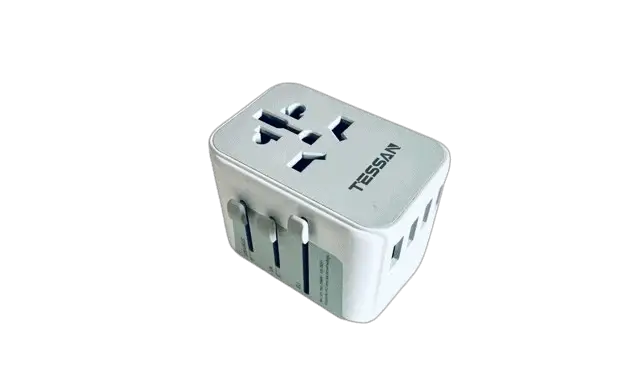
|
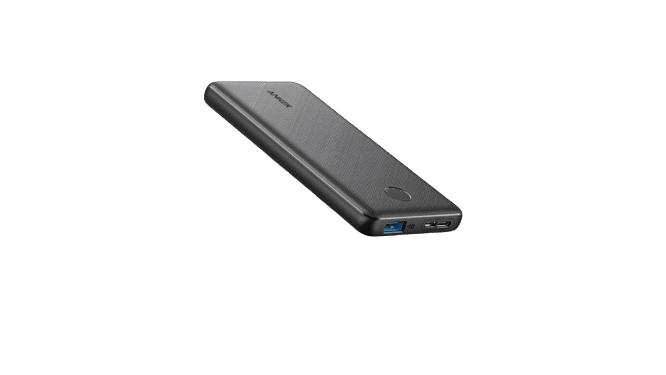
|
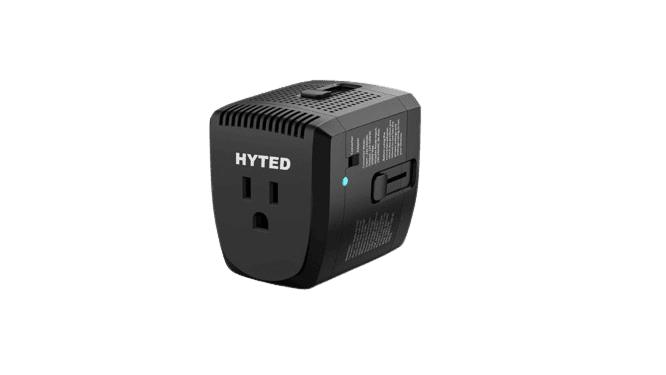
|
| A universal travel adapter | A 10,000 mAh power bank | A travel adapter and converter |
Using the Nozomi (which is one type of shinkansen), you can expect a travel time of 2 hours and 18 minutes from Tokyo to Kyoto, for instance, while the travel time by car would be almost 6 hours. These two cities are separated by 286 miles (ca. 460 km), more than the distance between New York and Washington, but if you pick a train from New York to Washington, you will spend much more time (between 3 and 4 hours for 239 miles (ca. 385 km)).
Few countries in the world can compete with the shinkansen today, the closest competitors being Germany (InterCityExpress 205 mph) and France (TGV 200 mph).
Also, when we talk about the Shinkansen’s max speed of 320 km/h (200 mph), don’t start thinking that this is really how fast these trains can go. This is the speed you can experience while riding the Shinkansen, but some test trains like Maglev can reach a max speed of 603 km/h (375 mph) on the Shinkansen dedicated railway lines. Maglev broke the world’s speed record with this speed on April 21st, 2015.
Knowing this, we can certainly expect that, soon enough, passengers will be able to experience higher speeds and shorter travel times.
Bullet Train Lines

Actual lines: all other colors
As mentioned before, Japan has dedicated railway lines for bullet trains. At this moment, there are 7 Shinkansen lines plus 2 mini-shinkansen lines, but there are 4 others under construction.
The shinkansen main lines + 2 mini-shinkansen lines:
- Hokkaido (from Aomori to Hakodate)
- Hokuriku (from Takasaki to Kanazawa)
- Joetsu (from Omiya to Niigata)
- Kyushu (from Hakata to Kagoshima)
- Sanyo (from Osaka to Hakata)
- Tohoku (from Tokyo to Aomori)
- Tokaido from Tokyo to Osaka)
- Yamagata (mini-shinkansen from Fukushima to Shinjo)
- Akita (mini-shinkansen from Morioka to Akita)
Here you have a table of the main Shinkansen lines regarding the year of launch, the company, and the length of each line:
| Line | Length (km) | Length (mi) | Company | Launch year |
| Hokkaido | 148.9 | 92.5 | JR Hokkaido | 2016 |
| Hokuriku | 345.4 | 214.6 | JR East/JR West | 1997-2015 |
| Joetsu | 269.5 | 167.5 | JR East | 1982 |
| Kyushu | 256.8 | 159.6 | JR Kyushu | 2004-2011 |
| Sanyo | 553.7 | 344.1 | JR West | 1972-1975 |
| Tohoku | 674.9 | 419.4 | JR East | 1982-2010 |
| Tokaido | 515.4 | 320.3 | JR Central | 1964 |
The Tokaido line is the main line from Tokyo and the one you will inevitably use, at least the first time you travel to Japan. It was also the very first bullet train line (1964). On the other hand, the Hokkaido line is the latest line, which opened in 2016.
Due to the huge success of the bullet train, 4 other lines are under construction. Here’s a table with some information on the future Shinkansen lines:
Insider tips for your Japan trip. Quick, easy, and free!
I Want This
| Line | From | To | Scheduled to |
| Kyushu (Nagasaki route) | Hakata | Nagasaki | 2023 |
| Hokuriku | Kanazawa | Tsuruga – Osaka | 2023-2046 |
| Chuo | Tokyo | Nagoya – Osaka | 2027-2037 |
| Hokkaido | Hakodate | Sapporo | 2030 |
Shinkansen Types
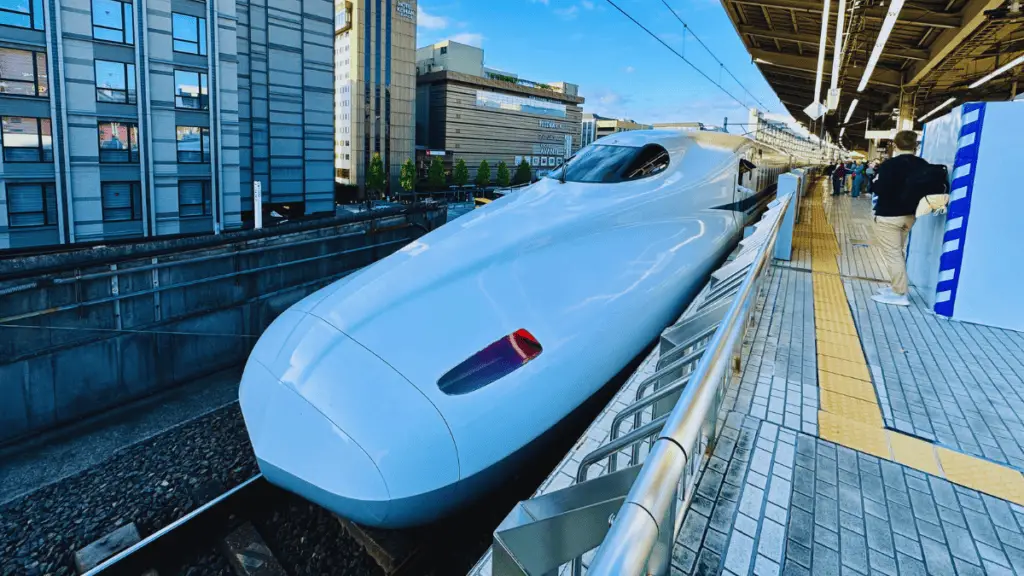
© Ana Costa
There are different train types (categories) that allow you to easily identify your train. Since you have fast, semi-fast, and local trains in almost every line, seeing the type of shinkansen will help you know how long your travel will take. Please note that other than the regular seats, the Shinkansen has 2 different classes: Green class with 2×2 seats and Gran class with 2×1 seats.
Types of Shinkansen:
- Komachi:
- 7-car train set
- Akita line
- Requires seat reservation
- Green class available
- Hayabusa:
- 10-car train set
- Hokkaido and Tohoku lines
- Speed of 320 km/h (200 mph).
- Requires seat reservation
- Green class available
- Hayate:
- 10-car train set
- Tohoku and Hokkaido lines
- Speed of 274 km/h (170 mph)
- Operates in the morning or late evening
- Requires seat reservation
- Green class available
- Toki:
- Also available in two-story train sets (known as Max Toki)
- Between 8 and 16-car train set
- Joetsu line
- Speed of 240 km/h (150 mph)
- Non-reserved seats available
- Green class available
- Tanigawa:
- Joetsu line
- Same as Toki, but this one is slower because it stops at all train stations
- Sakura:
- Kyushu and Sanyo lines
- Speed of 300 km/h (185 mph)
- Available in 6 or 8-car train sets
- Has reserved and non-reserved seats
- Green class available only in 8-car train set
- Tsubame:
- 6-car train set
- Speed of 260 km/h (160mph)
- Stops at all stations
- Kyushu line
- Has reserved and non-reserved seats
- No Green class
- Kagayaki:
- 12-car train set
- Hokuriku line
- Speed of 260 km/h (160mph)
- Requires seat reservation
- Green class and Gran class available
- Hakutaka:
- 12-car train set
- Hokuriku line
- Speed of 260 km/h (160mph)
- Has reserved and non-reserved seats
- Green class and Gran class available
- Asama:
- 8-car and 12-car train set
- Hokuriku line
- Has reserved and non-reserved seats
- Green class and Gran class available
- Tsurugi:
- 12-car train set
- Hokuriku line
- Has reserved and non-reserved seats
- Green class available
- Hikari:
- 8-car and 16-car train set
- Sanyo and Tokaido lines
- Speed of 300 km/h (185 mph) in the Sanyo line and 270 km/h (168 mph) in the Tokaido line
- Has reserved and non-reserved seats
- 3 Green class available on 16-car train set
- Kodama:
- 8-car train set
- Sanyo and Tokaido lines
- Stops at all stations
- Speed of 300 km/h (185 mph) in the Sanyo line and 285 km/h (175 mph) in the Tokaido line
- Has reserved and non-reserved seats
- No Green class in the Sanyo line
- Yamabiko:
- 10-car and 17-car train set
- Tohoku line
- Speed of 240 km/h (150 mph)
- Has reserved and non-reserved seats
- Green class available
- Nasuno:
- 10-car and 16-car train set
- Tohoku line
- Stops at all stations
- Has reserved and non-reserved seats
- Green class and Gran class available
- Tsubasa:
- 10-car train set
- Yamagata line
- Speed of 275 km/h (170 mph)
- Has reserved and non-reserved seats
- Green class available
- Nozomi:
- 16-car train set
- Kyushu, Tokkaido and Sanyo lines
- Stops at very few stations
- Has reserved and non-reserved seats
- 3 Green classes available
- Can’t use Japan Rail pass
- Mizuho:
- 8-car train set
- Kyushu, Tokkaido and Sanyo lines
- Runs mostly in the morning and evening
- Has reserved and non-reserved seats
- Green class available
- Can’t use Japan Rail pass
If you’re a fan of trains, you should know that you can buy several miniatures of Shinkansen on Amazon, like these small Tsubasa and Hayabusa bullet trains. And for total fans, there are even the shinkansen fork.
Shinkansen Tickets
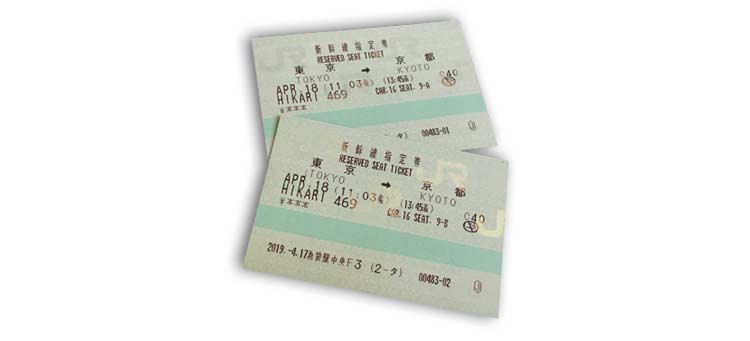
When riding the bullet train, you can choose to buy a regular ticket online, at ticket counters or ticket machines. Online reservation is great because you can take your time to find the ticket you need without stress, however, you still have to get the “real” ticket at the machines or counters. You have 3 different websites to make your reservation according to the lines you’ll be using.
- JR Kyushu Reservation System:
- For Kyushu, Sanyo, and Tokaido bullet trains
- JR West Reservation System:
- For Joetsu, Hokuriku, Kyushu, Sanyo and Tokaido bullet trains
- JR East Reservation System:
- For Joetsu, Hokuriku, Hokkaido, Yamagata, Akita and Tohoku bullet trains
If you prefer to do it using ticket vending machines, here’s a simple video that shows you some examples:
Otherwise, you can go to any ticket counter and purchase your ticket with the help of a real person 🙂
Regarding ticket prices, they vary according to the options you choose. You’ll have the base fare from A to B and then the Shinkansen supplement. You can have a seat reservation fee (usually 520 yen, but it can also cost 320 yen during low season or 720 yen during high season) and a Green car fee if you decide to travel in first class.
Riding the Shinkansen can be expensive, so if you’re planning on using it more than once (for long-distance rides), you should get the Japan Rail Pass instead.
Japan Rail Pass
There are 2 types of JR passes: Standard and Green. If you pick Standard, you can only use normal cars, while the Green pass allows you to use Green cars too. It’s very easy, right? 😉
The Japan Rail pass prices are fixed by the JR Group, so there’s no need to compare prices. The JR pass can be bought for 7, 14, or 21 days and there’s a different price for children.
Here’s a table to help you get an idea of the cost.
| 7 days | 14 days | 21 days | |
| Adult Standard | 50,000 | 80,000 | 100,000 |
| Children Standard | 25,000 | 40,000 | 50,000 |
| Adult Green | 70,000 | 110,000 | 140,000 |
| Children Green | 35,000 | 55,000 | 70,000 |
As prices can change at any time, please be sure to check the current price before planning your trip.
With the JR pass, you can ride the bullet train, but also all the JR trains (the only exceptions are the Nozomi and Mizuho Shinkansen). You can also use the JR pass with all local JR bus lines (except express bus lines). And finally, you can use the JR pass on the JR West Miyajima ferry (except for the ferry between Hakata and Pusan).
As you can see, the JR pass can be an interesting option if you’re traveling a lot in Japan.
There are plenty of websites you can use to buy the pass, but this one is very simple to use: Klook.com
When buying online, you receive a voucher to exchange for the JR pass once you arrive in Japan.
You should buy the Japan Rail pass a little in advance, but not 6 months before you travel. If you want more details on this, you can check my previous article.
Bullet Train Seat Reservation
You can make a seat reservation at any ticket counter. To do this you just have to know your train name and number or departure time.
You should also write down every train information to help the salesperson since you’ll probably face the language barrier.
Dreaming of Japan? Here’s your go-to guide for a great trip.
Download Free Guide
If you know exactly your itinerary, you can make a seat reservation up to a month in advance.
Seat reservation has a fee so if you don’t need it, don’t bother trying to reserve a seat (unless you’re riding a train with reserved seats only like Komachi, Hayate, Hayabusa, or Kagayaki or during high season).
Seat reservations can also be made online if you bought your pass from Japanrailpass.net.
Luggage in Bullet Trains
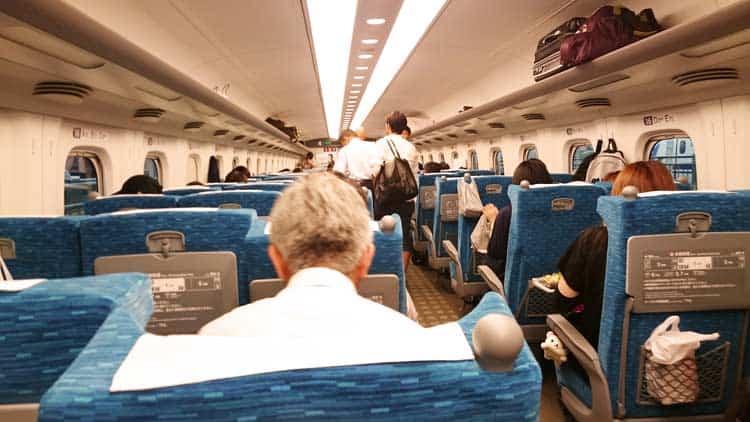
Regarding luggage, you must know that there’s not much luggage space in the bullet train. Except for the Narita Express and the Haruka train which take you to the airport, all other trains don’t have that much space for your luggage.
You’ll have the space above your head, like airplane cabins, and the space below your legs. When riding the bullet train with your large luggage, this can be a big problem, so make sure you respect these JR group rules regarding luggage in the shinkansen:
- 2 pieces of large luggage for each passenger
- Each piece can’t exceed 30 kg
- Each luggage can’t exceed 250 cm (length + width + depth together)
To avoid all these inconveniences, you might want to consider using a baggage delivery service, which delivers your luggage to your next hotel or back to the airport. The price depends on the size of your baggage, but usually, it goes from 1000 yen to 5000 yen. For example, on Klook you can find luggage service for cheap.
First Class in Bullet Trains
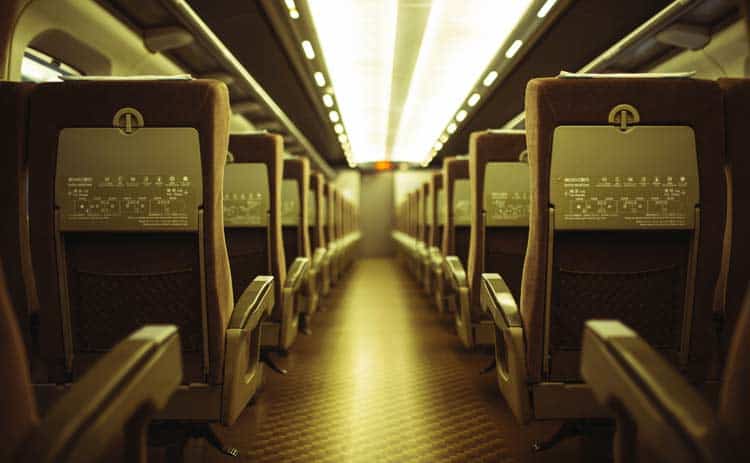
The first class in the Shinkansen is called the Green class, and you can use it with the Green JR pass. This class is better than the regular one, but what are the advantages?
When traveling in Green class, you will benefit from:
- More comfortable seats (wider, softer, 40° reclining angle)
- Larger legroom
- Large luggage space
- Magazines
- Larger windows
- Free snacks in the Kyushu line
- Separate smoking areas
The Green class can be particularly useful when you travel during busy months between June and September. Just make sure to book your seat before riding the Shinkansen.
Shinkansen Comfort
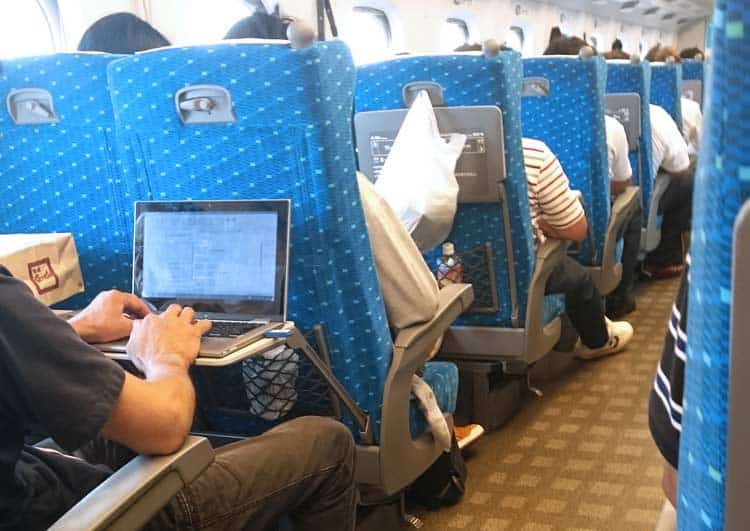
Riding the bullet train is a very comfortable experience by nature. These amazing high-speed trains have wide seats (even in normal class), they don’t need seat belts which are a little uncomfortable, and you can eat and drink on the train.
In newer trains, you can even charge your phone or laptop, which is very useful while traveling.
What makes the Shinkansen travel so relaxing is that people don’t block the aisle with their luggage, they keep their voices down, and they don’t answer the phone while on the Shinkansen.
Special Shinkansens and trains
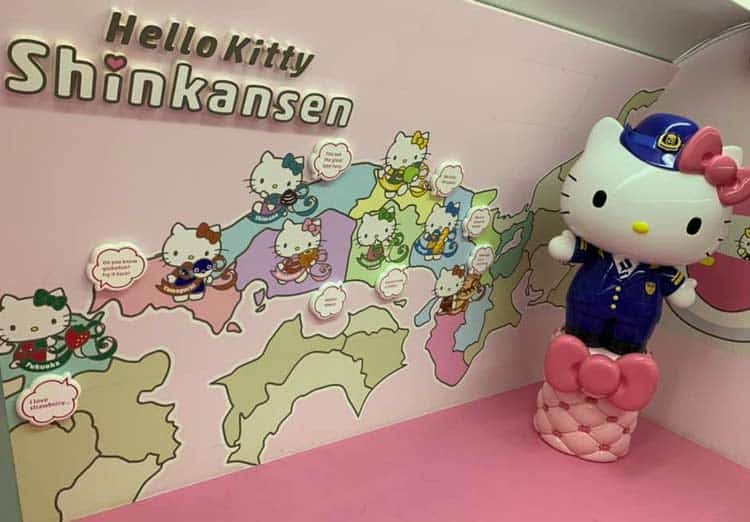
This is one of the most amazing things about Japan. The JR Group always makes some campaigns with decorated shinkansens, trains, buses, etc. By the time I wrote this article, the Hello Kitty shinkansen and train were the best ones in use. You can check out the articles about my rides on these two trains to know exactly what these are all about: Hello Kitty Shinkansen and Hello Kitty Haruka Train.
Even if you read this article later and the Hello Kitty Shinkansen isn’t available anymore, don’t worry because you’ll likely see another decorated Shinkansen because Japan is doing it all the time.
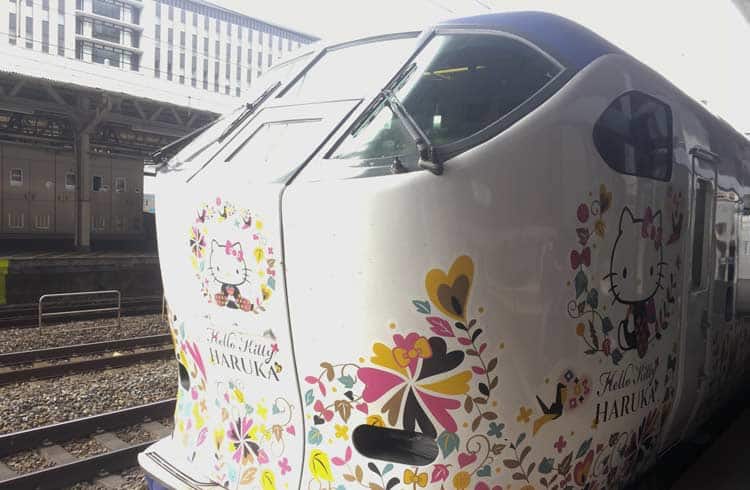
Super-express train from Kansai Airport to Kyoto
To finish this article, I’ll share with you this cool video with some useful shinkansen hacks you probably want to try. 🙂

